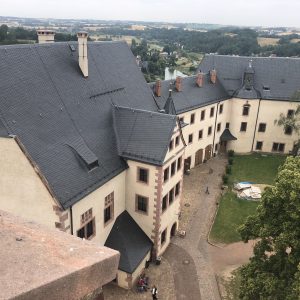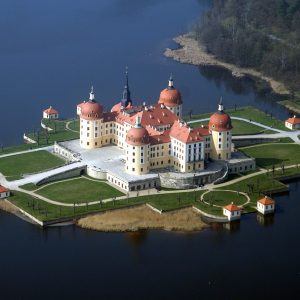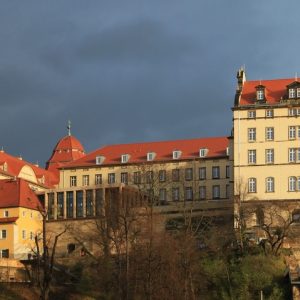The Wolfenbüttel Palace, located in the heart of Wolfenbüttel in Lower Saxony, is an architectural and historical masterpiece. Originally built in 1288 as a Gothic residence for the Welf dukes, the palace today bears witness to the diversity and richness of different architectural epochs.
While the original construction was designed in the Gothic style, expansions and adaptations were added over the centuries, shaping the appearance of the palace. In the 16th century, for example, the building received Renaissance elements, which are particularly expressed in the magnificent towers and intricate decorations. The renowned architect Hermann Korb, a defining figure of his time, played a significant role in these changes.
The palace experienced numerous turning points throughout its history: it was occupied and heavily damaged by enemy troops several times during the Thirty Years’ War, but underwent an impressive restoration after the war. The 19th century brought a redesign in the style of historicism, illuminating many rooms in Neo-Renaissance style.
As the former residence of the dukes of Brunswick-Lüneburg, the palace was a political and cultural center. It hosted important historical figures such as Duke Henry the Younger and the scholar Gotthold Ephraim Lessing. During World War II, it also served as a shelter for significant works of art.
Today, the Wolfenbüttel Palace functions as a museum, offering insights into the rich history of the region. Original furniture, artworks, and exhibits from different centuries can be found in the impressive rooms. A special highlight is the Herzog August Library, one of the oldest and most renowned libraries in Europe, housed in the palace and showcasing rare manuscripts and historical writings to visitors.
Currently, the Wolfenbüttel Palace is not listed as a UNESCO World Heritage Site, although its historical and architectural significance is undeniable. Therefore, a visit is highly recommended for all who are fascinated by history and architecture.
The precise address is:
Wolfenbüttel Palace
Schloßplatz 13
38304 Wolfenbüttel
Lower Saxony, Germany
The GPS coordinates are:
Latitude: 52.1628689
Longitude: 10.526918
You can find the website at:
https://www.museumwolfenbuettel.de/
Photo: Brunswyk
License: CC BY-SA 3.0





Reviews
There are no reviews yet.